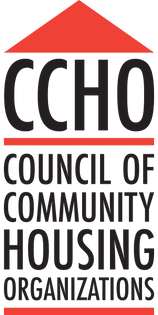Community Op-Ed: In the “new normal,” teachers still need housing. Where will they live?
By Faauuga Moliga and Shamann Walton
The pandemic reminds us how critical our educational system is to our City’s resilience. We are moving with the greatest care to ensure the safety of our students, families, educators and staff. We are struggling with the disparate impact that distance learning will have on our low-income students and students of color. This health crisis has exposed existing inequities and exacerbated the fragile housing and economic situation of many of our students. And for many of our workers in the educator community too.
As we plan for a day when we can return to in-person classes, we are very aware of how the pandemic and the economic recession are putting huge pressures on people’s housing stability, causing even further risk of displacement among our students and staff.
The school community will become even more important for sharing and accessing critical information for health, food, housing and employment security, and for students, families and educators to continue to gather and support each other (even if “virtually” for the near term). When classroom teachers, support staff and paraprofessionals live in communities where they practice their profession, it promotes stability, community involvement, and stronger ties between educators, students, and families. The connection between schools, housing and community has never been more apparent.
Under these conditions – the new normal – it is simply untenable to continue to assume that some teachers will commute from as far away as Vallejo, or live in RVs, as many were already doing before the pandemic. We need a clear plan for reversing those trends. It is more critical than ever, as we come out of this, to ensure housing security for our school educators and staff in proximity to the children and families they serve.
As leaders from the Board of Education and the Board of Supervisors, we are proud to see the City’s first educator housing project in the Sunset District moving forward through the current crisis, unlike many other stalled private projects, promising 135 new homes, with a mix of family units and smaller units, in the next two years. It will serve teachers, paraeducators and support staff at all the income levels of our workforce. As a pilot project, the school district working with the educators themselves designed it for attracting new educators to the City and maintaining our current workforce.
We are now looking at long-term educator retention, so teachers and staff can plan a secure future in San Francisco. The school district has already prioritized three underutilized sites spread out across the city for new educator housing developments, with the potential for at least another 500 educator housing units.
Now is the time, however, to reconsider what “development” looks like in our City. We and other public leaders have a choice in this. Will our model for Educator Housing be centered on the spirit that has made San Francisco strong, looking to its own assets and resources to create community-based development, or will it be a model similar to what corporate charter lobbyists push for that relies on handing over public lands and public resources to profit-centered entities? And we have a choice in our partnerships to develop these sites. Will it be San Francisco community-based developers with intimate knowledge of their communities and neighborhoods and proven local chops in it for the long-haul, or will it be private developers or mega nonprofits that are highly capitalized?
Last year San Francisco voters overwhelmingly approved $20 million in the Prop A housing bond earmarked to jumpstart this next phase of educator housing, and at the same time voted overwhelmingly to rezone public school sites to allow 100% affordable educator housing. We take this as a mandate to create the best possible outcomes. Like the best our schools have to offer as community-building spaces, our educator housing projects should similarly be centered on holistic communities, bringing amenities that serve not just the educators as residents but the broader neighborhood in a community partnership model.
The pandemic has us all struggling to figure out new educational paradigms and structures, and how to ensure that our public education does what it is meant to do: serve all San Franciscans, without leaving any community behind. As we emerge from the pandemic, we will be returning to a very changed world, with a recession that will likely have long-term consequences. In this world, it’s our proactive commitment to public sector investments in housing for our educators and a commitment to enlisting our community-based organizations in providing that housing that will lift up our communities together.
Faauuga Moliga is a commissioner with the San Francisco Board of Education, and Shamann Walton is a member of the San Francisco Board of Supervisors.
